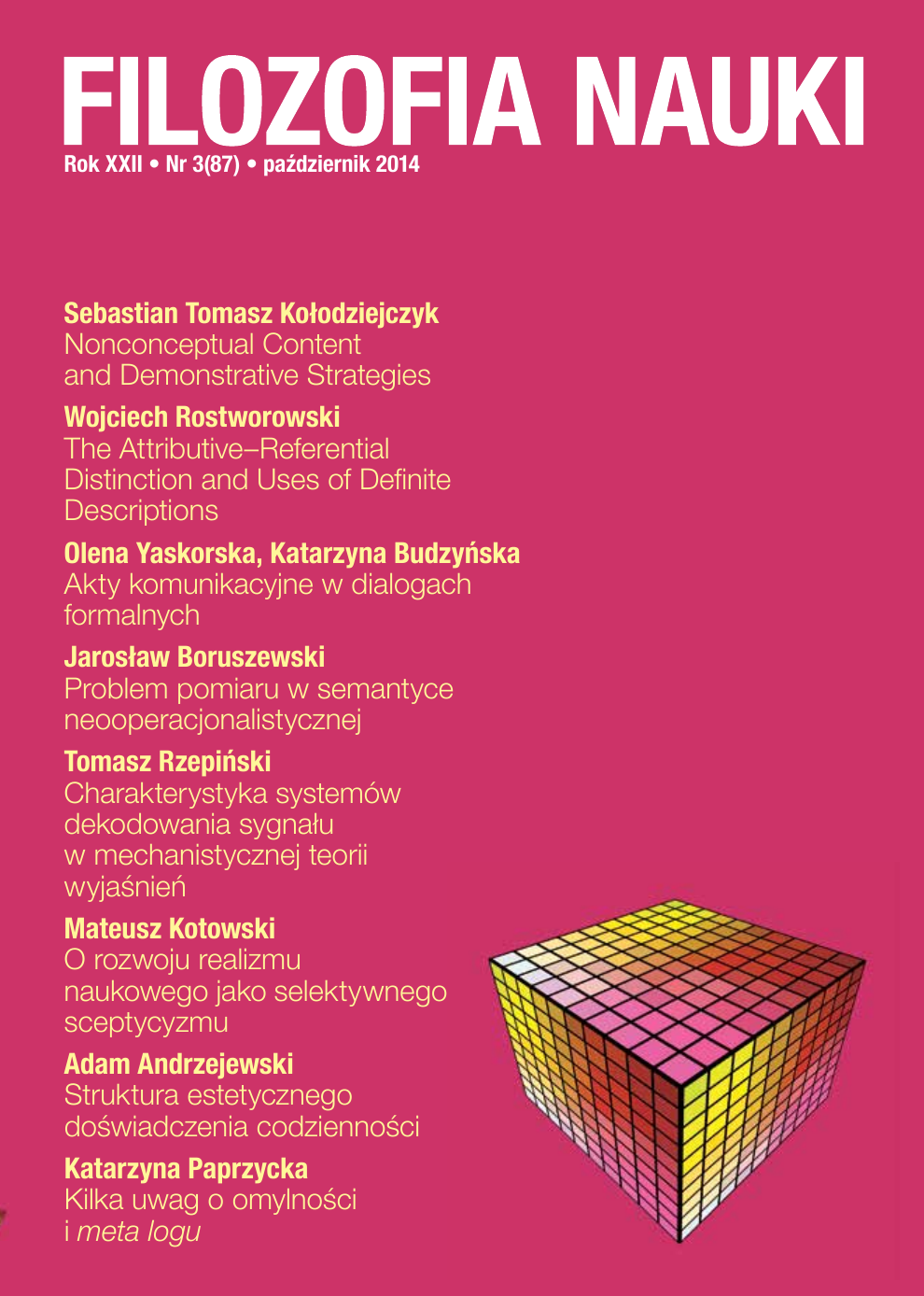Struktura estetycznego doświadczenia codzienności
Słowa kluczowe:
everyday aesthetics, aesthetic experience, aesthetic qualities, judgmentAbstrakt
In the project of everyday aesthetics all elements of daily life, such as sunset, cooking one’s favourite dish, or sitting in a comfortable chair, are a subject of philosophical reflection. According to the proponents of the project (e.g. Yuriko Saito, Sherry Irvin, Ted Leddy), these activities and objects, despite their commonness, have a profoundly aesthetic character. The main goal of this paper is to present and analyze a general structure of the central category of everyday aesthetics — the concept of aesthetic experience.
The paper consists of three sections. First, I outline two common understandings of everyday aesthetic experience, introduced by Saito and Irvin. It is shown that despite their novelty they appear to be rather confusing. A major doubt is that they do not clearly show how to distinguish aesthetic pleasures from non-aesthetic pleasures (Irvin) or everyday aesthetic experience from other daily experiences (Saito). As a result, the concept of everyday aesthetic experience turns out to be too broad, and thus it lacks explanatory power.
Second, I argue that the categories used by Saito and Irvin to describe everyday aesthetics, although immensely helpful, are not sufficient to capture all phenomena of ordinary life. It is because they only apply to some of the properties which can be recognized as aesthetic in everyday life (e.g. “dirty”), but they say nothing about the very structure of the experience. Therefore, I put forward definitions of certain properties which, in my opinion, adequately describe and individualize experiences characteristic of everyday aesthetics. These are: contingency, repetition, and permeability.
Finally, it is highlighted how a reconsidered concept of everyday experience matter to the issues outside the realm of aesthetics. It is revealed that the crucial feature of everyday aesthetic experience is its ambivalence. Our immersion into society, current affairs, and complex relations with other agents force us to make decisions all the time. Each everyday aesthetic judgement requires decision(s) which may be followed by serious consequences (e.g. in socio-economical life). Thus I would contend that judgements in everyday aesthetics are “decision-making” (contrary to tradition ally understood aesthetic judgements, which do not require, necessarily, any action in the outer world). In perceiving common things as objects eliciting aesthetic experience, we are always asked to choose which dimension (a set of meanings) of particular experience is crucial for us. The structure of everyday aesthetic experience, as defined above, explains and justifies what we often call (following Saito) “the power of the aesthetic”.















 Filozofia Nauki | ISSN 1230-6894 | e-ISSN 2657-5868
Filozofia Nauki | ISSN 1230-6894 | e-ISSN 2657-5868